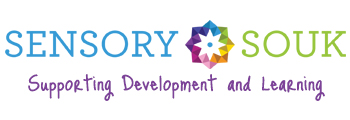The Importance of Rewards

Rewarding children for good behaviours, such as bedtime routines, toilet training, fussy eating and sharing toys can be an extremely successful way of reinforcing and increasing the frequency of such behaviours. Reward charts are a fantastic, visual mechanism of displaying when a child achieves them.
Reward charts can work for all children. In my experience, they can be a brilliant way of focusing children with ADHD (Attention Deficit Hyperactivity Disorder) and or ASD (Autistic Spectrum Disorders) on their positive behaviour.

What can you reward?
It’s good to be specific with rewards so that children (and you!) know exactly what they have to do in order to be rewarded. It’s also important to make sure everyone giving the rewards is consistent.
There’s so much you can reward a child for. In fact any good behaviour that you would like your child to repeat, can be rewarded.
These might include:
- Sharing toys.
- Manners: Saying ‘Please’ and ‘Thankyou’.
- Eating healthy foods such as fruit and vegetables.
- Holding hands with parents when walking on the pavement or in a shop.
- Tidying toys away before mealtimes.
- Adhering to screen time limit/ turning the TV off when asked.
- Trying to go to sleep by themselves/ not getting up too early.
We’ve been using the Visual Reward Chart to reward our toddler for not getting up too early. Since we’ve started using it he’s been getting up later. Needless to say, the Visual Reward Chart is very loved in our house!
You can also reward children for practising new skills in order to encourage them to try and develop it. In my opinion, it’s best to reward children for their efforts and not just their achievement of the skill, this reinforces the importance of trying their best.
Skills you can encourage using reward charts may include potty training, practising riding their bike and trying at swimming lessons.

Why Are Rewards Important?
As well as the obvious benefit of children achieving the desired outcome e.g. being successfully potty trained, or a fan of broccoli at dinner time, using rewards has a whole range of benefits:
- Helps parents/ careers focus on and look for the positives rather than negatives. By having a reward chart it means you, as parents, are actively looking for the child to show you good behaviour, as opposed to being on the look out for them misbehaving. This often turns parenting techniques on their head, making it a more positive experience. This in itself can dramatically change a child’s behaviour for the better.
- Makes changes in behaviour more manageable. Instead of being overwhelmed by a long list of behavioural issues to tackle, by choosing one behaviour at a time to change it becomes much more achievable.
- Has a positive impact on your relationship with your child. By focusing on the positives your relationship with your child often becomes more positive as well.
- Makes it fun to behave/do as mum and dad say! We found using the Visual Reward Chart made our child find behaving and following our instructions enjoyable and good fun.
The chart comes complete with 1 plastic board, 12 different reward symbols and 5 star symbols, all of which can be easily placed and removed because of the velcro backing.
This article was written and published by Special Educational Needs (SEN) Resources Blog (senresourcesblog.com) and adapted by Sensory Souk.
- Raana Smith






